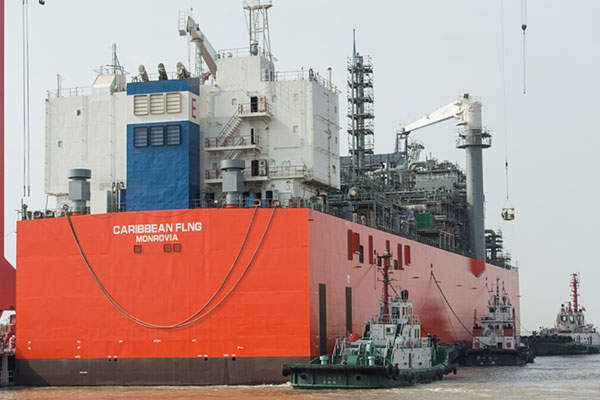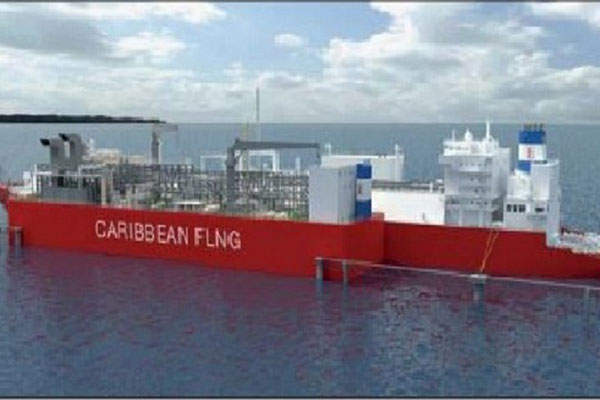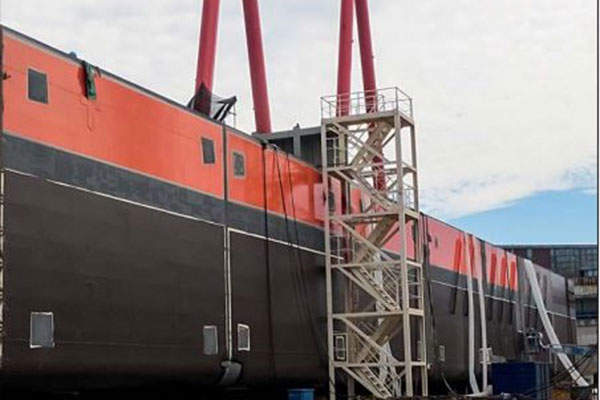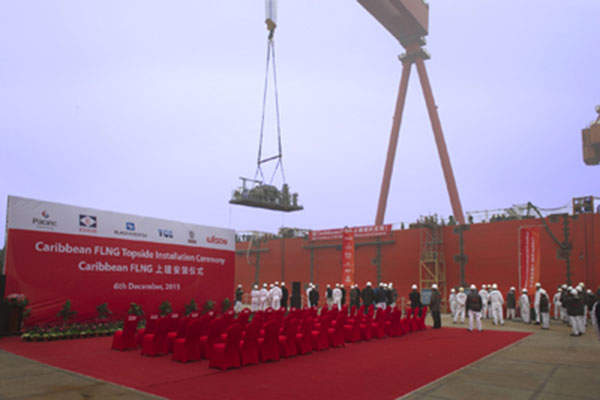The Caribbean floating liquified natural gas (FLNG) project involves the construction of a pipeline between the La Creciente gas field and the Caribbean coast, as well as the development of a liquefaction and regasification barge to deliver LNG to industrial consumers.
A floating, liquefaction and storage unit (FLSU) will be connected to a floating storage unit (FSU) to allow exports to carriers.
The project is being developed by Pacific Rubiales Energy, which owns and operates the La Creciente gas field, to explore alternate ways of monetising its gas field by tapping into stranded gas reserves.
The project will be developed in partnership with EXMAR according to an agreement signed in 2012 under which, EXMAR will build, own and operate the FLNG. Pacific Rubiales Energy will own exclusive rights to supply and liquefy up to 453,592t of LNG a year for a period of 15 years.
The FLNG unit will be moored 3km offshore Tolu, Colombia. Production is expected to begin in the second quarter of 2015. It is expected to be the world’s first operational FLNG unit and will serve the expanding export markets of the Caribbean and Central America.
La Creciente field details
Located in Colombia’s Lower Magdalena Valley, the La Creciente block covers 39,367ha and 4,536m² of land (97,279 acres). The La Creciente gas field started producing in 2007 and has five production wells.
Gas extracted from the field is being delivered to the natural transport system through the Guepaje-Sincelejo main pipeline since the production facilities were certified by the Colombian Ministry of Mines and Energy in 2007.
Gas is transported using the services of Promigas that increased the transport capacity of the pipeline to 60 million metric standard cubic feet a day (MMscfd).
Caribbean FLNG details
The Caribbean FLNG unit is a non-propelled floating LNG facility that will be able to convert 72mmscfd of natural gas into approximately 453,592t of LNG a year for storage and export purposes.
The FLNG barge is 144m-long, 32m-wide and 20m-deep, and has an operating draft of 5.4m. A total of three large LNG storage tanks, weighing 395t each and having a combined storage capacity of 16,100m³ are fitted onboard. Liquefaction equipment, LNG production facilities and process equipment are present on the topside deck.
The FLNG unit uses Black & Veatch’s patented PRICO® single mixed refrigerant technology. The structure has self-developed leg mooring that allows it to remain horizontally steady in rough waters.
Pressure changes in key components and production environment are checked by fibre-grating sensing technology. The distributed optical fibre passive sensor, equipped with strong wave-resistance and high-security features, also monitors hazardous gas in the production area.
Feed gas supply to Caribbean FLNG
Feed gas will be supplied from the La Creciente gas field by means of a new 88km-long, 18in-diameter pipeline between the gas field and the Colombian Atlantic Coast.
Sale of LNG produced from the Caribbean FLNG
Pacific Rubiales Energy signed a heads of agreement with Gazprom Marketing and Trade in November 2013 to sell 453,592t of LNG from the project for a period of five years.
Key players involved
Wison Offshore & Marine was awarded the engineering, procurement, construction, installation and commissioning contract in April 2012. The constructed was performed at the contractor’s fabrication facility in Nantong, China.
Black & Veatch’s patented PRICO® LNG technology was used for the engineering and procurement of topside liquefaction equipment and packages. Construction support, on-site commissioning and start-up services will also be provided by Black & Veatch.
The LNG storage tanks were provided by TGE. The hull of the FLNG was coated with Ecospeed, an innovative glassflake, non-toxic, long-lasting hull coating system from Hydrex.






